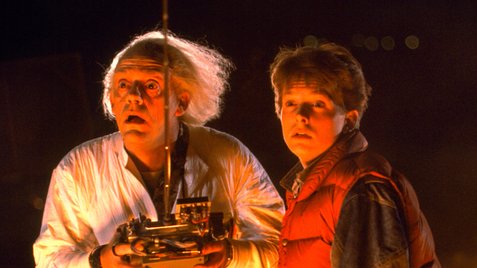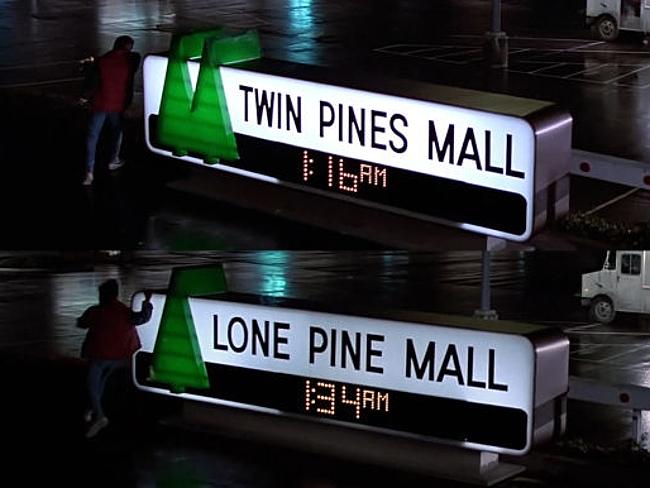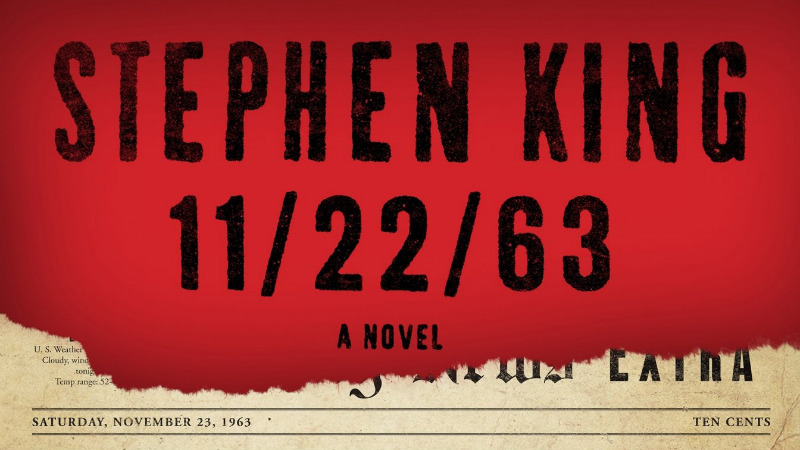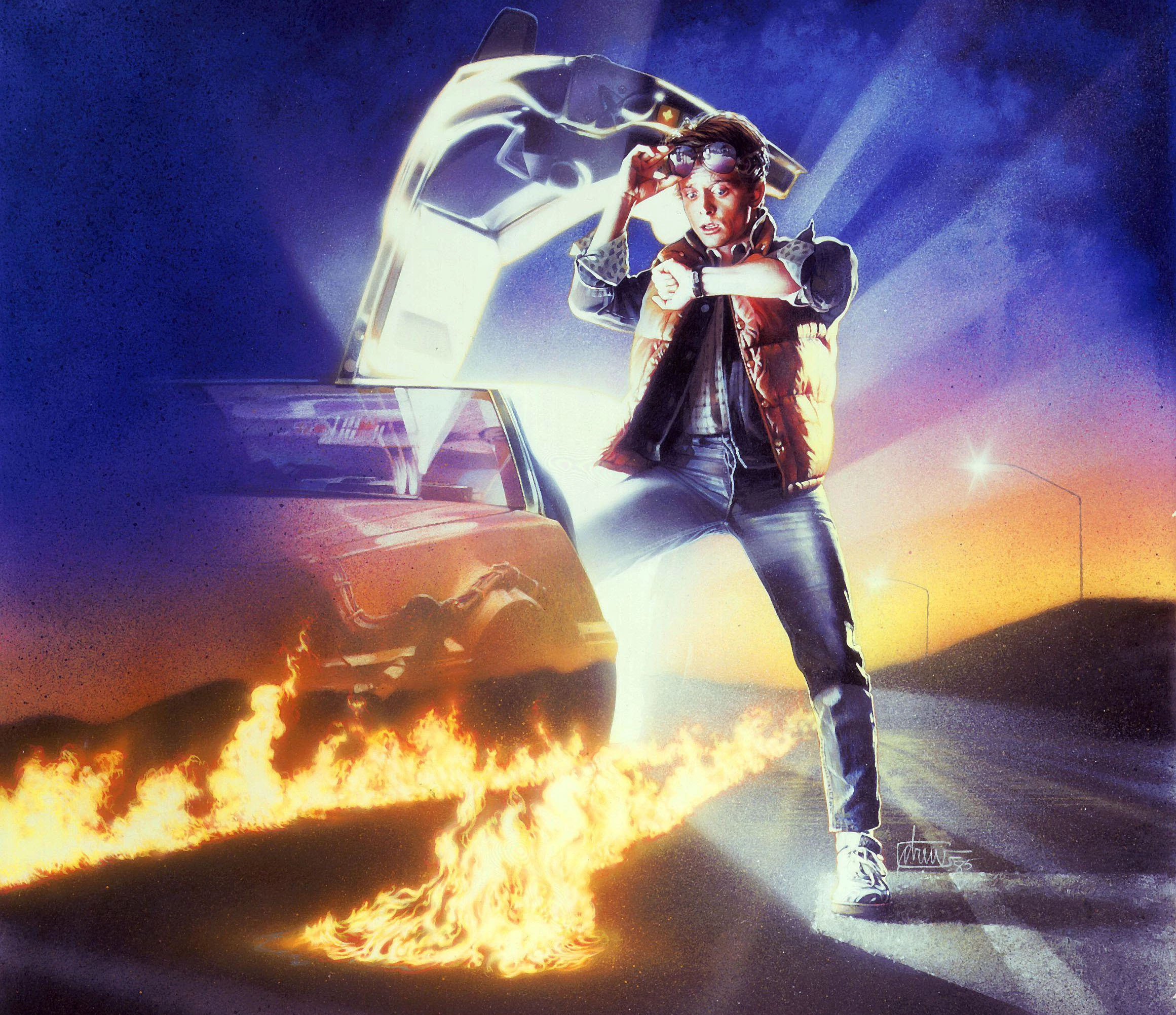Time travel is my favorite genre of fiction. It allows us to examine the consequences of our choices and the questions of free will. From the silly to the complex, I find myself invested in how storytellers interpret the concept. How does time travel work? And does the story adhere to the established rules? The answers are always fascinating.
Because I love time travel so much and because this is my website and I can do what I want, I decided to create a series of articles looking at the various types of time travel fiction. Each article will focus on a specific “genre” of time travel and the film/television/literature set within. Some stories will fall into various genres, so I’ll do my best to make the most sense of them.
Without further ado, I present the first article of the Time for Time Travel series…
Let’s Do The Time Warp Again – Mission in the Past
The quintessential time travel story is simple: Something is wrong in the present and the only way to fix it is to travel back in time. These stories are usually less reliant on the science of time travel and instead focus on completing a mission and creating “fish out of water” hijinks. These stories end up being more “fun” than other time travel counterparts, as in, don’t think too hard about the time travel itself.
Now, let’s think too hard about time travel!
Back to the Future

We’ll begin with one of the most famous time travel films out there, Back to the Future. For the sake of simplicity, we’ll focus just on the original film. Parts II and III are great additions, but don’t quite fit into the same genre as the first.
The Mission: Marty needs his parents to kiss at the Enchantment Under the Sea dance.
Hoping to Avoid: Being erased… from existence!
Does it follow established time travel rules?: Somewhat, but there is a lot of fudging.
While Back to the Future is a classic example of a “mission in the past” story, Marty actually ends up in the past by accident. Once there, Marty creates his own temporal problem when he encounters his mom. She ends up with the hots for Marty instead of his dad. Lovely. His mission is to fix this problem before returning to the future.
Before we go any further, I should note that Back to the Future is one of my top 5 favorite films. I love it immensely. Every character is amazing and the film hits all the right notes of a time traveling adventure. I wouldn’t change a thing about it. It’s perfect. But the point of this series is to delve into the time travel aspects of stories and Back to the Future falls into some common plot holes. It doesn’t make the film any less wonderful.
One challenge of time travel stories in general, but especially “mission in the past” stories, is that you need some time travel restrictions. If you had a way to time travel any time you wanted, there would be little suspense and no consequences. For the sake of drama, the story must implement some way to limit time travel.
Back to the Future implements a travel restriction quite well. Once Marty arrives in 1955, the Delorean’s Flux Capacitor is kaput. No more time travel. In fact, he only has one chance to get back to the future, on a specific date and time. This deadline creates tension for the story without causing any time travel problems.
But there is another deadline in play as well, that of his parents kissing at the dance. This plotline, as entertaining as it is, is a weaker point of time travel in the film. The whole concept of Marty slowly becoming weaker the longer his parents don’t kiss really doesn’t make much sense. That Marty exists at all should show that his parents do still kiss. But even if he wouldn’t be erased until he failed in 1965, why would he slowly disappear? It’s fairly nonsensical and simply a plot device to add suspense.
What’s funny is that certain parts of Back to the Future really adhere to the time travel formula. My favorite little noticed detail relates to the Twin Pines Mall, the setting for Doc’s initial execution and Marty’s time travel. When Marty travels back in time, he runs over one of two pine trees in Mr. Peabody’s pine tree farm. At the conclusion of the film, Marty returns to the mall, now called Lone Pine Mall. It’s a subtle change, but it shows the creators were thinking of the details, even if they didn’t always hit the mark.

The entire conclusion of the film is much more feel-good than it is adhering to time travel rules. Marty returns to find his family much happier and well off than when he left him due to his father’s new sense of self-worth. But does that make sense? When you think about it, not really. Somehow, despite a new attitude on life, Marty’s parents lived in the same house, had the same kids, and pretty much lived the exact same life before, except happier. Marty’s life in this new reality was in fact so similar, that he had the same plans for the same weekend with the same girlfriend as the original reality. It’s a little far fetched, because one would think that his actions would have more consequences.
But who cares? I don’t. I love Back to the Future and you probably do too.
Star Trek IV: The Voyage Home and Star Trek: First Contact

Two Star Trek films fall into the “mission in the past” genre and I think they are both worth mentioning. Let’s look at what is on the line for each.
The Mission (Star Trek IV: The Voyage Home): Get some whales!
Hoping to Avoid (Star Trek IV: The Voyage Home): Earth being destroyed by a destructive alien force that only speaks in whale-ese.
Does it follow established time travel rules? (Star Trek IV: The Voyage Home): Mostly.
The Mission (Star Trek: First Contact): Prevent the Borg from stopping First Contact.
Hoping to Avoid (Star Trek: First Contact): Being erased… from existence!
Does it follow established time travel rules? (Star Trek: First Contact): Again, mostly.
Star Trek is no stranger to time travel. It is present in every television series and a handful of feature films. Many consider The Voyage Home and First Contact to be in the top tier of Star Trek films and it’s no coincidence they both include time travel. Each approaches the “mission in the past” genre slightly different.
Star Trek IV: The Voyage Home takes the comedy route, placing the original series cast in then present day 1986. The film emphasizes the “fish out of water” theme as Kirk and the gang must navigate the backward modern era. Antics ensue as Chekov asks for the location of nuclear vessels during the Cold War and Spock attempts to understand human culture using colorful metaphors.
Star Trek: First Contact takes the opposite approach, with a more dramatic take on time travel. They follow the Borg back to 2063 to prevent any disruption to their timeline. There are the usual bits of humor, but in general this is a character piece involving Picard, Data, and the Borg Queen.
But what about the time travel? The Voyage Home follows the Back to the Future formula almost exactly. The crew must repair their ship to get back to the future (much like powering the Delorean), while also completing their primary mission of collecting some whales (like making sure Marty’s parents kiss). Star Trek: Enchantment Under the Sea anyone?
The rules are definitely looser in First Contact. The Enterprise crew were able to travel back in time via a temporal vortex created by the Borg, but by no means are they trapped in the past. At the end of the film they simply recreate the vortex and leave. Instead, they must stay in the past to complete their mission and ensure that the Borg do not prevent first contact with the Vulcans.
The question is, why couldn’t either crew simply “try again” if they failed at their mission? First Contact tries to work around this. The Enterprise crew briefly sees the alternate Borg-ified timeline, but the changes do not effect them. The crew surmises that the Borg’s temporal vortex insulated them from any ill effects. One could argue that if they attempted to return to the future without stopping the Borg, they would be erased from existence.
The Voyage Home, on the other hand, doesn’t really justify a reason. In fact, the film commits a time travel no-no. Throughout the film, they flash back to the future to show the alien force assaulting Earth. This implies that the longer they spend in the past, the less time Earth of the future has before being destroyed. Of course, this doesn’t make much sense in terms of time travel. They could, in theory, return to any point in the future to solve their problem. How long they remain in the past shouldn’t matter.
Both films also briefly play with the notion of paradox (which is another genre I’ll cover in a later article). Specifically, do certain past events unfold only because the future crew was involved? In The Voyage Home, the crew takes a pretty lackadaisical approach to the whole thing. Scotty even bribes an engineer with advanced technology to pay for the plexiglass they need. “How do we know he didn’t invent the thing?” Scotty asks. Did they just alter the timeline or is this a paradox?
In First Contact, they try the whole “undercover operative” thing, but eventually just say fuck it and tell Zefram Cochrane they’re from the future. What’s the worst that could happen, right? We don’t actually see the future the Enterprise crew returns to, but we assume they haven’t altered the timeline. In fact, we even hear about their timeline meddling in Star Trek: Enterprise, which leads us to believe that Zefram Cochrane only succeeded in his mission due to future interference. This interpretation is another possible paradox.
Placing all that aside though, both films follow the rules of time travel fairly well. None outright break any of the rules established and most funny business can be explained away or simply looked over. In the end, we have two excellent “mission in the past” films and two excellent Star Trek films.
11/22/63

I wanted to end this piece with the novel 11/22/63 by Stephen King (the Hulu adaptation is worth a watch as well) because it has one of my favorite plot devices in time travel. But first…
The Mission: Save JFK!
Hoping to Avoid: JFK being assassinated.
Does it follow established time travel rules?: Absolutely.
11/22/63 clearly establishes its time travel rules and they are nearly perfect. Wikipedia states them as:
1. Every journey through the portal transports the traveler to September 9, 1958, at 11:58 a.m.
2. No matter how long someone stays in the past—hours, days, weeks, or years—only two minutes elapse when they return to 2011.
3. Past events can be changed; however, subsequent use of the portal “resets” the timeline and nullifies all changes made on the previous excursion.
4. The “obdurate” past throws up obstacles to prevent history from being changed. Such resistance is proportional to the magnitude of the change.
The first rule is really what makes the story. In 11/22/63, time travel is incredibly specific. You can only go back to one exact moment in time. No gallivanting around the time continuum for you. The other rules build on that. In 2011, you are only gone for a couple minutes every time, so no worries there. The third rule, regarding resetting the timeline, makes perfect sense as well. That is how it should work and we see that in other films, like Back to the Future Part 2. And the last point is really just “hey, this is how we create dramatic tension in the story” so there isn’t much to argue about there.
What I love about the novel is that time travel is so restrictive. If you want to save JFK, you can’t just go to the specific date. Instead you have to live in the past for 5 years. And if you mess something up, which invariably happens, you have to reset and start over. It’s a super fun plot device and reminiscent of King’s storytelling.
As one would expect, much of the novel focuses on how you spend 5 years in the past. Obviously, there is a lot of prep for stopping an assassination attempt, like confirming that Oswald actually killed JFK. But I found myself much more invested in the everyday characters of the novel, which is always King’s strength.
How well does the novel follow the rules established? About as perfect as possible. What is nice about the rules is that it makes them hard to break. Your actions have consequences, but you can always undo them if you want/need to. You could raise the question: why isn’t Jake Epping altered by his trips to the past? Could he erase himself from existence? But the story implies that once he time travels, his fate is now independent of the timeline, which is a perfectly fine explanation.
11/22/63 is a great piece of time travel fiction. It takes a perfectly logical approach to the established rules and is also just downright entertaining. Classic Stephen King.
***
“Mission in the past” is the most basic time travel genre, but has created a lot of classics. Sure, there are some time travel inconsistencies, but we usually overlook those problems because the stories themselves are fun. In my next article, that may not be the case. We’ll be ramping up the time travel madness. Into the rabbit hole we go.

One Reply to “Time for Time Travel: Let’s Do The Time Warp Again”